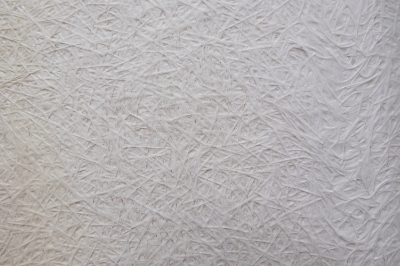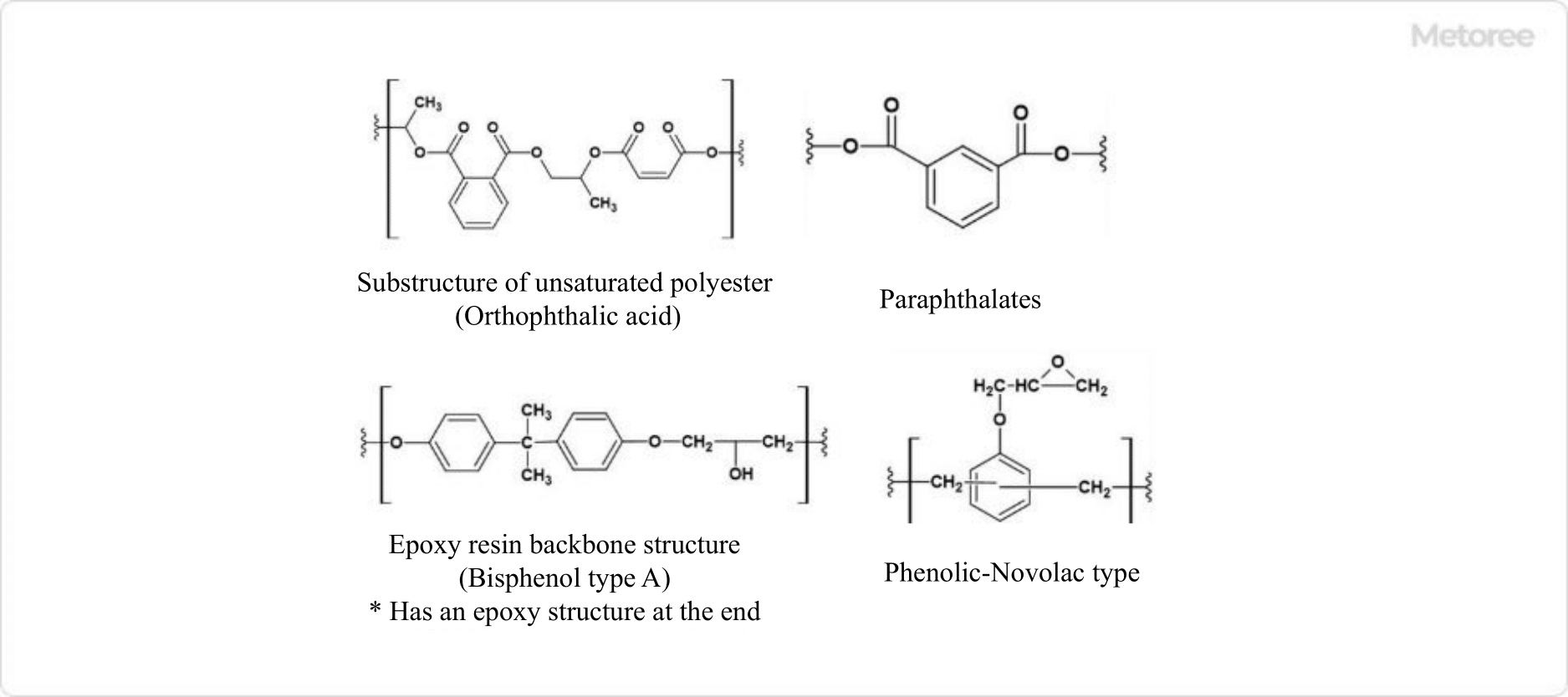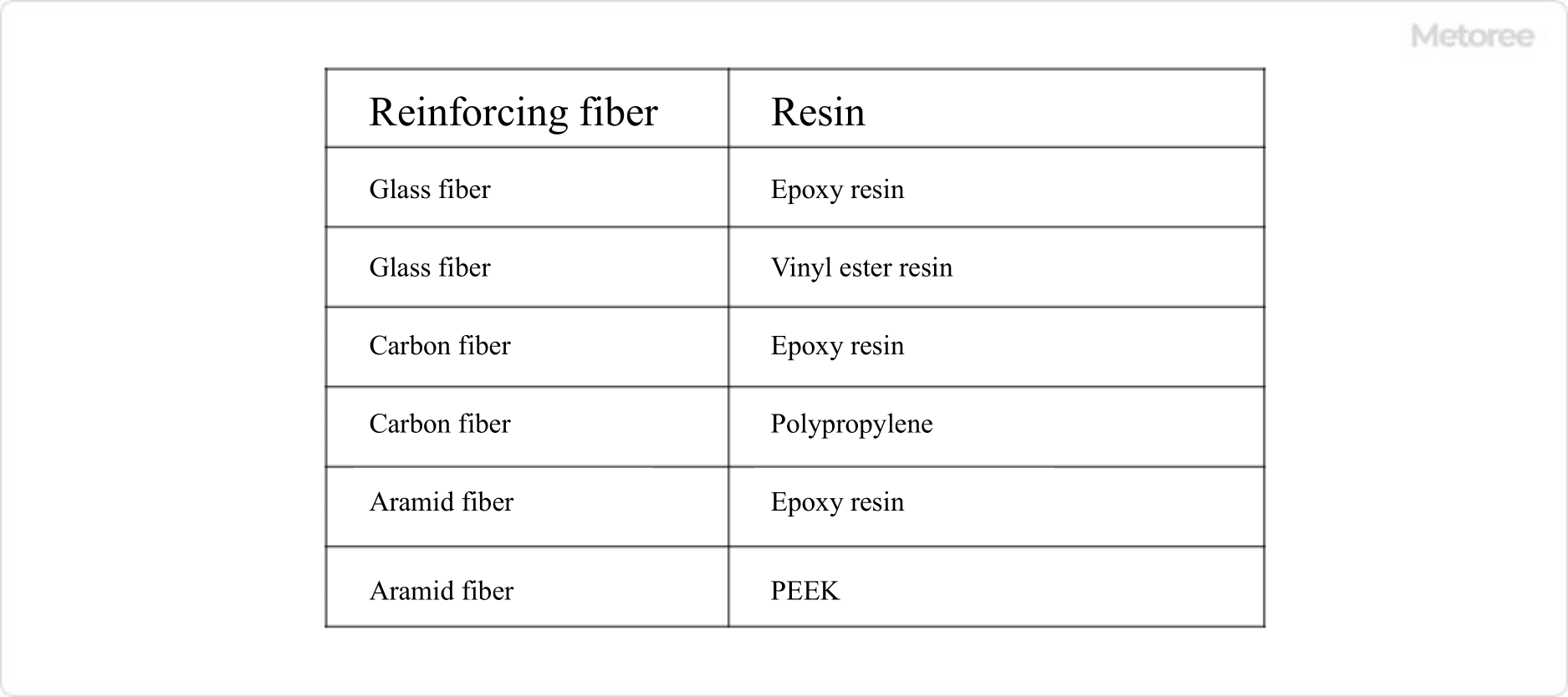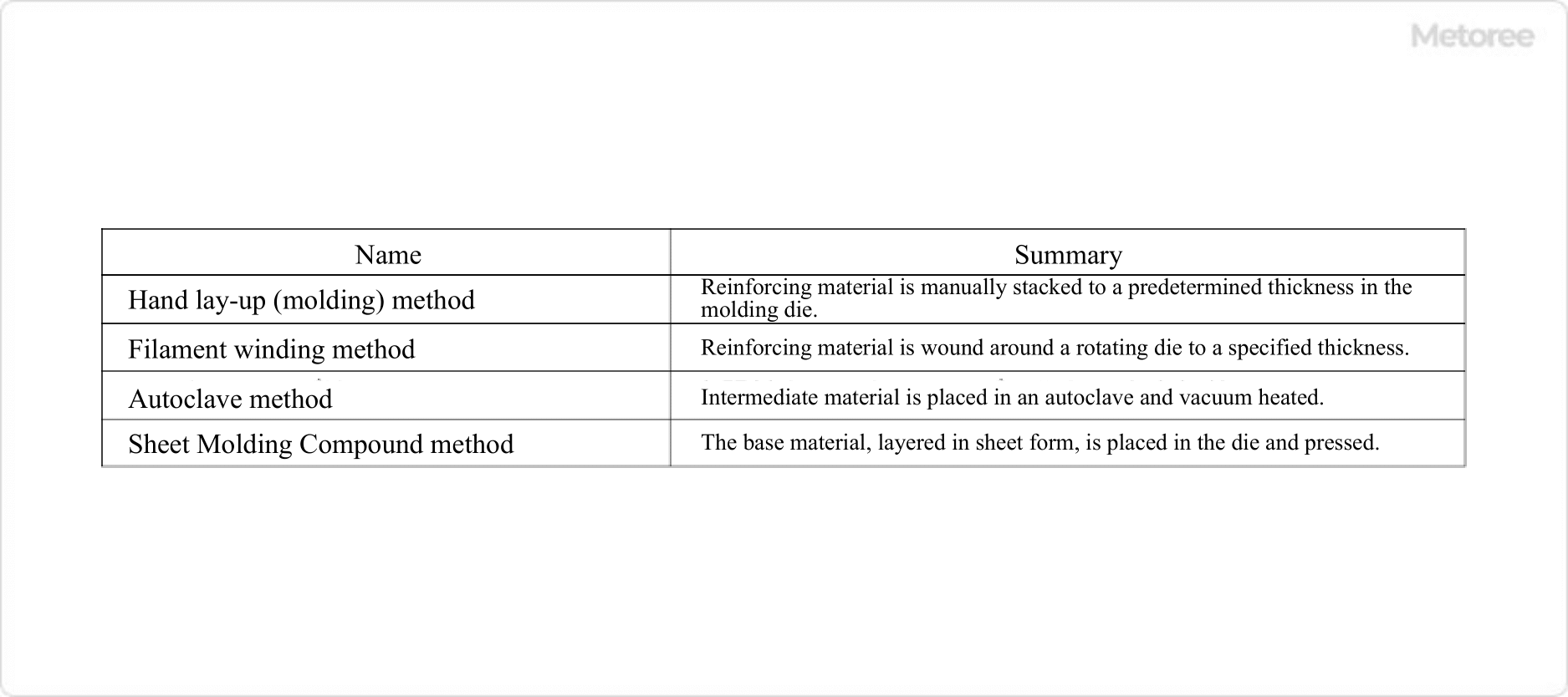











29 FRP Resin Manufacturers in 2024
This section provides an overview for frp resins as well as their applications and principles. Also, please take a look at the list of 29 frp resin manufacturers and their company rankings. Here are the top-ranked frp resin companies as of July, 2024: 1.U.S. Composites, Inc, 2.Peliswan Impex Private Limited, 3.Interplastic Corporation.
Table of Contents
Graduated from Kyoto University, Faculty of Science, Graduate School of Science, Master (Chemistry). Joined a major general chemical manufacturer listed on the First section of the Tokyo Stock Exchange in April 2013. Engaged in analysis and scale-up of new functional polymers. Moved to another major manufacturer since May 2021. Specializes in analytical chemistry, physical chemistry, polymer chemistry, and polymer molding and processing.
https://www.linkedin.com/in/yuta-ishino-1bb143229/
What Are FRP Resins?

FRP Resins are fiber reinforced plastics (FRP), which are made by mixing matrix resins such as epoxy resins with reinforcing materials such as glass fibers.
FRP Resins are widely used as lightweight and strong materials for aircraft and other transportation equipment parts, construction materials, sporting goods, and even in the space industry for rocket and satellite parts.
The physical properties of FRP Resins vary depending on the matrix resin and reinforcing material used. Therefore, it is important to select the most suitable FRP Resins for each application.
Uses of FRP Resins
FRP Resins are used in aircraft and other transportation equipment parts, chemical storage tanks, construction materials, sports equipment, and even rocket and satellite parts.
FRP Resins are called by different names depending on the reinforcing material added, and each has different characteristics. FRP Resins containing glass fibers are GFRP.
GFRP has a greater specific strength than metal materials, is a lighter material, and is non-conductive due to the presence of glass.
On the other hand, CFRP, which contains carbon fibers, is stronger and harder than GFRP, but conducts electricity.
However, all FRP Resins share the same properties of being light and strong.
Structure of FRP Resins

Figure 1. Structure of FRP resin
FRP Resins are composed of matrix resins and reinforcing materials. Unsaturated polyester resins, epoxy resins, and vinylester resins are used as matrix resins.
Unsaturated polyester resins have the advantages of easy molding and excellent water resistance. Flame resistance can also be added by adding halogens.
Epoxy resins have excellent acid and alkali resistance and chemical resistance but are difficult to mold. Vinylester resins are easy to mold and have excellent mechanical strength. Bis-A resins are inferior in solvent resistance but superior in acid and alkali resistance, and Novolac resins are inferior in oxidation resistance but superior in solvent and heat resistance.
Types of FRP Resins

Figure 2. Types of FRP resins
Glass fiber, carbon fiber, and aramid fiber are used as reinforcing agents in FRP Resins. GFRP made with glass fibers has a higher specific strength than metal, is non-conductive, and is relatively inexpensive.
On the other hand, CFRP made of carbon fiber is stronger, lighter, harder, and more conductive than GFRP. AFRP made with aramid fibers is lighter and stronger, but less workable.
Because of their different chemical structures, the corrosion resistance of each type of reinforcement varies greatly. The properties of GFRP also change with the grade of glass fiber used.
E-glass, the most commonly used for FRP Resins, contains very little alkali metal and has excellent water resistance, but when in contact with strong acids, components such as Al and Ca leach out, causing cracking.
Carbon fiber, on the other hand, is affected by strong oxidizing chemicals, but can be used in most environments without problems. Aramid fibers have amide bonds that cause hydrolysis when in contact with alkaline chemicals, and they are easily degraded by ultraviolet rays.
Other Information on FRP Resins
Processability of FRP Resins

Figure 3. Processability of FRP resin
Carbon Fiber FRP Resins (CFRP) are formed by infiltrating liquid thermosetting epoxy resin into carbon fibers, cutting out semi-cured sheets, and pressurizing and thermosetting them in an autoclave. However, the above method requires matrix resin to permeate the fibers, making it difficult to apply to thermoplastic resins with high viscosity.
On the other hand, molding methods for CFRP using thermoplastic resin are still being studied, for example, press molding. In this method, carbon fiber containing thermoplastic resin is heated, transported, and pressed in a die, then cooled and cut for processing.
However, this method still has issues, such as the need for a method to cut CFRP with high strength cleanly and without blade wear.
List of 29 FRP Resin Manufacturers
*Including some distributors, etc.
Sort by Features
- Default
- Company Size: largest first
- Year Founded: oldest first
- Year Founded: earliest first
Sort by Area
- United States of America
- China
- India
- Italy
- Japan
- United Kingdom
-
-

-
Interplastic Corporation
Polyester Resins
Manufacturer Overview
Interplastic Corporation was founded in 1959 and is based in Minnesota, United States, as a manufacturer of unsaturated polyester products for composites and cast polymer industries. The company has ISO 9001:2015 and ISO 14001:2015 certifications and provides polyester, vinyl ester, gel coats, adhesives, compounds, and, colorants for architectural & theme park, pool & spa, corrosion & fire retardant, marine, and, road & bridges construction sectors as well as for surfboard, transportation, and, wind energy industries. The company also offers casting, pultrusion, resin transfer molding & infusion, open molding, and laminating services.
-
-
-
-

-
Beetle Plastics
Beetle FRP Resin
Manufacturer Overview
Beetle Plastics, founded in 1950 and based in Chickasha, Oklahoma, is a manufacturer of custom fiberglass products and offers field services such as installation. The company produces fiberglass pipes, tanks, vessels, ducts, and pipe support systems. The products produced by the company are utilized in wastewater systems, acid storage and handling, pipeline transportation, and construction industries. In 2014, Cooling Towers, Inc., acquired all the assets of Bettles Plactics, including the trade name.
-
-
-
-

-
Exxon Mobil Corporation
Polyethylene Products
Company Overview
ExxonMobil is a Texas-based multinational oil and gas corporation that operates as a producer, manufacturer, supplier and distributor across 200 countries and territories around the world. Formed in 1999 with the merger of companies Exxon and Mobil, the corporation's primary commodities include oil products such as gasoline, diesel and jet fuel, as well as chemicals like propylene, polyethylene, polypropylene. Other commodities include crude oil and natural gas extracted — as well as refined — via ExxonMobil's subsidiaries and partners like Exxon Neftegas, ExxonMobil Australia, and ExxonMobil Nigeria.
-
-
-
-

-
U.S. Composites, Inc
Polyester Resin-Isophthalic
Distributor Overview
U.S. Composites, Inc U.S. Composites, Inc. is a retail/wholesale distributor of composite materials located in West Palm Beach, Florida since 1978. The company offers various products and accessories, such as fiberglass and reinforcement goods like cloths, mats, roving and biaxial. It also manages polyester and epoxy resins and pigments, as well as mold making rubbers and materials, and adhesives and sealants. The firm maintains long-lasting relationships with suppliers, making it competent. In addition, it ships an order within 48h after placement and accepts multiple payment methods.
-
-
-
-

-
Fibre Glast Developments Corp.
Isophthalic Polyester Resin
Distributor Overview
Fibre Glast Developments Corp., a company established in 1956, based in Brookville, Ohio, USA, is a distributor and supplier of fiberglass and composite materials. The company provides various products such as carbon fiber, epoxy resins, fiberglass, polyester resins, vacuum bagging, and vacuum pumps. These products are used for various applications such as aerospace, automotive, marine, power generation, prototyping, and modeling. In this time, it built the largest and a comprehensive composites catalog in the industrial sector; investing along the way in the product knowledge.
-
-
-
-

-
DIC CORPORATION
Polyester Resins
Manufacturer Overview
DIC, established in 1908 in Japan, is a manufacturer and supplier of printing inks, organic pigments, and PPS compounds. The company's product portfolio includes different printing inks, such as offset inks used for quality printing, gravure inks for packaging materials, and UV-curable inks for various applications. They also offer organic pigments used in automotive coatings, and PPS compounds, used in electronic and automotive components. DIC's products are used in industries like automotive, electronics, food, and housing. They provide quality products and services that meet societal needs while addressing local and global challenges.
-
-
-
-

Manufacturer Overview
INEOS, established in 1998 with headquarters in the UK, is a global manufacturer of petrochemicals, specialty chemicals, and oil products, operating over 30 individual business units that have expanded across the chemical and oil and gas industries, with diversification into consumer brands. The company's consumer brands include INEOS Grenadier 4X4 vehicles, INEOS Hygienics, and Belstaff clothing. INEOS Group's oil and gas operations include the long-term extraction of natural gas, the INEOS FPS pipeline, and INEOS Shale for the exploration and extraction of shale. The company's chemical operations include the production of ABS-standard and styrenic specialties, acetic acid, and INEOS Aromatics.
-
-
-
-

-
Polyplastics Co., Ltd.
Polyester Resin
Manufacturer Overview
Polyplastics USA, Inc., based in Minato-ku, Tokyo, was founded in 1964 and is a manufacturer and supplier of many types of engineered plastics and polymers. Among the goods are Acetal copolymers, polybutylene terephthalate, liquid crystal polymers, cyclic olefin copolymers, and polyphenylene sulfide utilized in producing extruded goods, mobile phones, water pipes, cosmetic brushes, and automobiles industries. The firm is a SONY Green Partner with certifications including ISO 9001, IATF 16949, NSF, and ISO 14001.
-
-
-
-

-
POLYNT
Unsaturated polyester resins
Manufacturer Overview
POLYNT, in Scanzorosciate, Bergamo, in 1955 is a manufacturer of organic anhydrides and their derivatives. The company's product portfolio includes vinyl ester resins, bonding pastes, unsaturated polyester resins, malic acid, and bonding pastes. Their products are used in industries such as Food and Beverage, Pharmaceutical and Biotechnology, Chemical and Petrochemical, Environmental Testing and healthcare. They also provide services such as production planning and raw materials supply , Production process, and quality control and logistics.
-
-
-
-

-
Peliswan Impex Private Limited
Unsaturated Polyester Resin
Manufacturer Overview
Peliswan Impex Private Limited, established in 2017 and located in Gujarat, India, is a manufacturer and exporter specializing in industrial oil, GP resins, light liquid paraffin, and others. The company's product portfolio includes biodiesel oil, chemical solvents, mineral turpentine oil, and distillation units. These products are used in various industries, such as manufacturing, automotive, energy, and chemical processing. The company exports its products to countries including Nepal, Bangladesh, Sri Lanka, Bhutan, and South Africa.
-
-
-
-

-
SUGAM POLYTECH PVT. LTD.
Polyester Resin for FRP
Manufacturer Overview
Sugam Polytech Pvt. Ltd., established in 2012 and based in Rajkot, India, is a manufacturer and exporter of unsaturated polyester resins. The company provides several resins, including engineering stone resins, fiberglass resins, GP resins, and clear cast polyester resins. These products are used in various industries, including automotive, construction, marine, and wind energy. The company's unsaturated resins are UV-resistant, flame-retardant, and with high-strength, making them suitable for packaging and shipping solutions. Its products are exported to countries such as Hason Major Market, Angola, Dubai, Ethiopia, and Mexico.
-
-
-
-

-
Changzhou Rule Composite Material Co., Ltd
Unsaturated Polyester Resin
Manufacturer Overview
Changzhou Rule Composite Material Co. Ltd., established in 2002 and located in Changzhou City, China, is a manufacturer of high-performance unsaturated polyester resin, gel coat, glass fiber-reinforced composite materials, and related products. The company's products include fiberglass chopped strand, fiberglass woven fabric, gel coat resin, pultrusion RTM resin, and buttons transparent cast. These products are used across various sectors, such as railways, automobiles, wind power, and anti-corrosion engineering. The company's unsaturated polyester resin has good corrosion resistance, UV resistance, flame retardant, high strength, and toughness.
-
-
-
-

-
Orson Resins and Coatings Private Limited
FRP Resin
Manufacturer Overview
Orson Resins and Coatings Private Limited (ORCPL), established in 1998 and based in Mumbai, India, is a manufacturer of polyester resins for the composites, paints, and coating industry. The company's product line includes gelcoats and topcoats, orthophthalate resins, low-styrene emission resins, vinyl ester resins, and fire-retardant resins. The company can also customize spray-up, hand layup, SMC/DMC, pultrusion, and other resins for various industries, such as chemical containment, automotive, marine, electrical, and mass transit.
-
-
-
-

-
Ruia Chemicals Pvt. Ltd.
Polyester Resin
Manufacturer Overview
Ruia Chemicals Pvt. Ltd., incorporated in 1976 and based in Kolkata, West Bengal, India, is a manufacturer of fiberglass-reinforced plastic (FRP) products and concrete admixtures. The company offers FRP tanks and pipes for chemical as well as water transport or storage applications, and concrete admixtures for enhancing the properties of poured concrete. It also offers unsaturated polyester resin for use in industrial composites and coatings. The company mainly serves clients in the industrial manufacturing and construction sectors.
-
-
-
-

-
Aypols Polymers Private Limited
FRP Resins
Manufacturer Overview
Aypols Polymers Private Limited, founded in 1997 in Tamil Nadu, India, is a manufacturer in the polymer industry. The company specializes in the production of corrugated sheet resin and solid surface resin, serving comprehensive market needs. It upholds stringent quality standards with ISO 9001 certification, and the advantages of its resins include robust strength, adaptability, and durability, making them ideal for various applications. These resins find common use in industries such as construction, interior design, and manufacturing.
-
-
-
-

-
Chemsol, Inc.
RESIN
Manufacturer Overview
Chemsol was founded in 1978 and is headquartered in Indianapolis, Indiana. The company is a manufacturer of specialty chemicals and paints for use in manufacturing, military, and other markets requiring non-slip safety paint and related products. Customers include Walbridge, Crown, Disney for use in theme parks, and John Deere. The company’s products are in two categories, Military Spec, and Non-Slip. Military Spec products include paints, coatings, corrosion-preventative compounds, lubricants, and others. Non-Slip categories include easily applicable DIY paint, barefoot-friendly paint, high-traffic-grade paint, and military-grade paint.
-
-
-
-

-
Radhe Krishna Industries
Fiber Glass Products
Manufacturer Overview
Radhe Krishna Industries, established in 2019 and headquartered in Shahwadi, Ahmedabad, India, operates as a manufacturer and supplier of paint and paint accessories. The company offers a diverse product range that includes Flexocoat, Gum Rosin, and Paint Brushes. Within the FRP (Fiberglass Reinforced Plastic) paint brushes category, its offerings encompass regular FRP brushes, FRP heavy black brushes, and FRP heavy white hair brushes. Additionally, the company provides paint rollers, industrial safety gloves, turpentine oil, pigment powders, and solvents. These products find broad application in various industries, catering to painting, coating, and surface enhancement needs across different sectors.
-
-
-
-

-
Revex Group
UNSATURATED POLYESTER RESIN
Company Overview
Revex Plasticiser, established in 1981 and located in New Delhi, India, is a manufacturer and supplier of unsaturated polyester resin, composite materials, and derivatives. The company's product line includes FRP general-purpose resin, unsaturated polyester resins, fiber glass, release agents, and pigment pastes. These products are used in various industries, including aerospace, automotive, construction, marine, and sports equipment manufacturing. The company also specializes in providing high-performance composite additives, such as filler additives, reinforcement additives, and UV-resistant additives, designed to enhance the strength, durability, and thermal properties of composite materials.
-
-
-
-

-
Tirupati Polymers
FRP products
Company Overview
Tirupati Polymers, established in 1999 and located in Faridabad, Haryana, India, is an ISO 9001:2015-certified manufacturer and supplier of plastic granule products for industrial engineering applications. The company's product range includes polycarbonate (PC) compounds used in manufacturing electronic components and eyewear lenses; polybutylene terephthalate (PBT) compounds for automotive parts and electrical connectors; and polymethyl methacrylate (PMMA) compounds for creating signage and light fixtures. It also offers acrylonitrile butadiene styrene (ABS) compounds for appliances and consumer electronics, and nylon compounds for bearings and gears.
-
-
-
-

-
Chongqing Dujiang Composites Co., Ltd.
Resin
Company Overview
Chongqing Dujiang Composites Co., Ltd., established in 2002 and located in Chongqing, China, is a supplier and manufacturer of fiberglass products, raw materials, composite materials, and derivatives. The company's products include fiberglass mats, fiberglass mesh cloth, unsaturated polyester resin, vinyl ester resin, and auxiliary materials for FRP. These products are used in various applications, such as industrial high strength anticorrosion FRP glass fiber composite, fiberglass insulation, fiberglass laminates, soundproofing, and fireproofing.
-
-
-
-

-
CTech-LLC
OPR™ resin
Company Overview
CTech-LLC, established in 1998 and based in Troy, Michigan, USA, is a manufacturer and supplier of structural strengthening solutions. The company's product range includes Structural Strengthening, Concrete Repair, Connecting and anchoring, Flooring, and Protective Coating. These products are designed to enhance the durability and resilience of structures. The company serves industries such as Transportation Infrastructure, Water and wastewater Structures, Oil, Gas, and Industrial Facilities, and Waterfront Structures. In addition to its product offerings, it provides services such as Customer Profile, Systems Licenses, Customer Surveys, and Software and Web Applications.
-
-
-
-
-
-

-
Kingoda Fiberglass & Composites Manufacturing Co., Ltd.
UNSATURATED POLYESTER RESIN
-
-
-
-
-
SKYLINE RESINS AND CHEMICALS
UNSATURATED POLYESTER RESINS
-
-
-
-

-
Fiberglass Florida, Inc.
Polyester Resin
-
-
-
-

-
Fiberglass Warehouse
Polyester Laminating Resin
Company Overview
Fiberglass Warehouse, a company established in 1968, based in Charlotte, North Carolina, USA, is a distributor and supplier of fiberglass and composite materials. The company provides various products such as fiberglass cloth, carbon fiber, epoxy resin, polyester resin, gelcoat, and vacuum bagging. These products are used for various applications such as marine, automotive, aerospace, construction, and prototyping. The company serves various industries, including marine, aerospace, automotive, and construction and also offers technical support and advice to its customers.
-
-
-
-

-
Electrical Insulation Suppliers
Precatalyzed Polyester Resin
Distributor Overview
Electrical Insulation Suppliers, established in 2019 and headquartered in Wollongong, United States of America, is a supplier and distributor of electrical, electronic, and mechanical process materials. The company supplies adhesives, bearings, cleaning supplies, dispensing equipment, and electric motors and parts. It also offers hand and power tools, safety and personal protections, static controls, lighting, and wires. The products are used for apparatus repair, OEM motors, OEM transformers, and electronic assembly markets. It has passed ISO 13485:2016, ISO 14644-1:2015, and ISO 9001:2015 certifications in Rochester, Canton, Kennesaw, Tulsa, Monterrey, and Tempe.
-
-
-
-

Distributor Overview
AOC was founded in 1934 and is headquartered in Taipei, Taiwan, as a supplier of solutions to help a business grow. The existence of manufacturing knowledge, proprietary equipment, and automated process control systems ensures consistency that can be relied upon. The service provides essential goods and instils tranquillity, enabling individuals to concentrate on professional endeavors and clientele. The service offered guarantees the prompt delivery of essential materials, enabling individuals to maintain a state of calmness and concentrate on professional pursuits and customer base.
-
-
-

-
TAP Plastics
Isophthalic High-Strength Resin
Distributor Overview
TAP Plastics is a distributor of fiberglass materials and sheet acrylics, founded in 1952 and headquartered in San Leandro, California, USA. The company is the ultimate destination for DIY enthusiasts who enjoy home improvement projects. They offer a range of products including chemcast acrylic sheets, light panels, polycarbonate, window films, and illusion films. In addition to custom plastic panels, they also offer a wide range of rods, tubes, adhesives, casting products, and signage supplies to support the customers in every DIY endeavor. Their HDPE products are designed for commercial cutting board surfaces as well as a range of marine applications.
-
-
FRP Resin Manufacturer Ranking
*Including some distributors, etc.Ranking as of July 2024
Derivation Method| Rank | Company | Click Share |
|---|---|---|
| 1 | U.S. Composites, Inc |
15.0%
|
| 2 | Peliswan Impex Private Limited |
7.5%
|
| 3 | Interplastic Corporation |
7.5%
|
| 4 | INEOS |
6.3%
|
| 5 | SKYLINE RESINS AND CHEMICALS |
5.0%
|
| 6 | SUGAM POLYTECH PVT. LTD. |
5.0%
|
| 7 | Orson Resins and Coatings Private Limited |
5.0%
|
| 8 | Ruia Chemicals Pvt. Ltd. |
5.0%
|
| 9 | Aypols Polymers Private Limited |
5.0%
|
| 10 | Polyplastics Co., Ltd. |
5.0%
|
Derivation Method
The ranking is calculated based on the click share within the frp resin page as of July 2024. Click share is defined as the total number of clicks for all companies during the period divided by the number of clicks for each company.Number of Employees
- Exxon Mobil Corporation: 62,000
- DIC CORPORATION: 22,743
- Aypols Polymers Private Limited: 20
Newly Established Company
- Resin Library: 2020 (4 years ago)
- Radhe Krishna Industries: 2019 (5 years ago)
- Peliswan Impex Private Limited: 2017 (7 years ago)
Company with a History
- POLYNT: 1955 (69 years ago)
- Polyplastics Co., Ltd.: 1964 (60 years ago)
- Ruia Chemicals Pvt. Ltd.: 1978 (46 years ago)
FRP Resin Manufacturers in United States
*Including some distributors, etc.
- Interplastic Corporation
- Beetle Plastics
- Exxon Mobil Corporation
- U.S. Composites, Inc
- Fibre Glast Developments Corp.
Global Distribution of FRP Resin Manufacturers by Country
*Including some distributors, etc.
| Country | Number of Companies | Share (%) |
|---|---|---|
 India
India
|
7 | 36.8% |
 United States of America
United States of America
|
5 | 26.3% |
 Japan
Japan
|
2 | 10.5% |
 United Kingdom
United Kingdom
|
2 | 10.5% |
 China
China
|
2 | 10.5% |
 Italy
Italy
|
1 | 5.3% |
